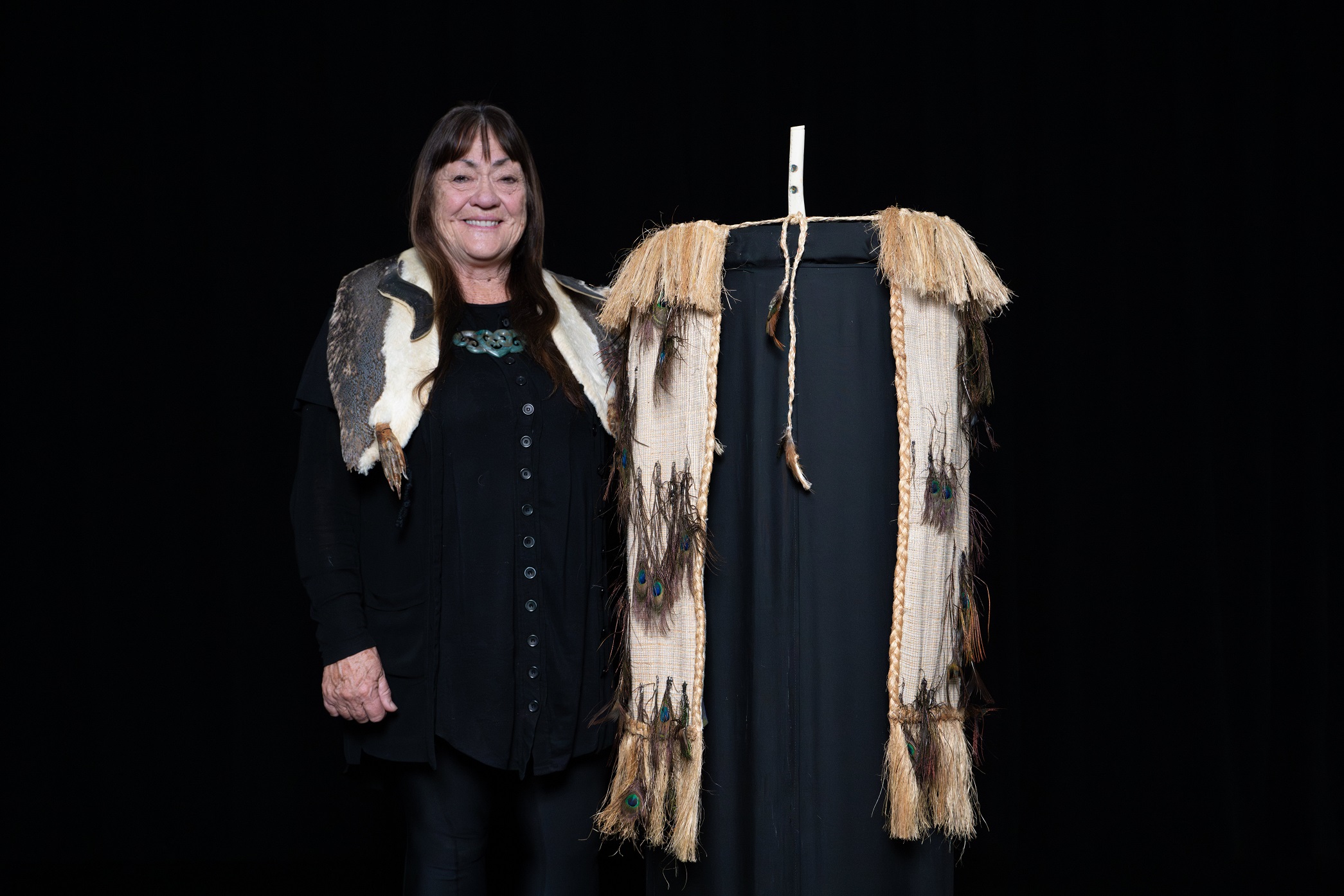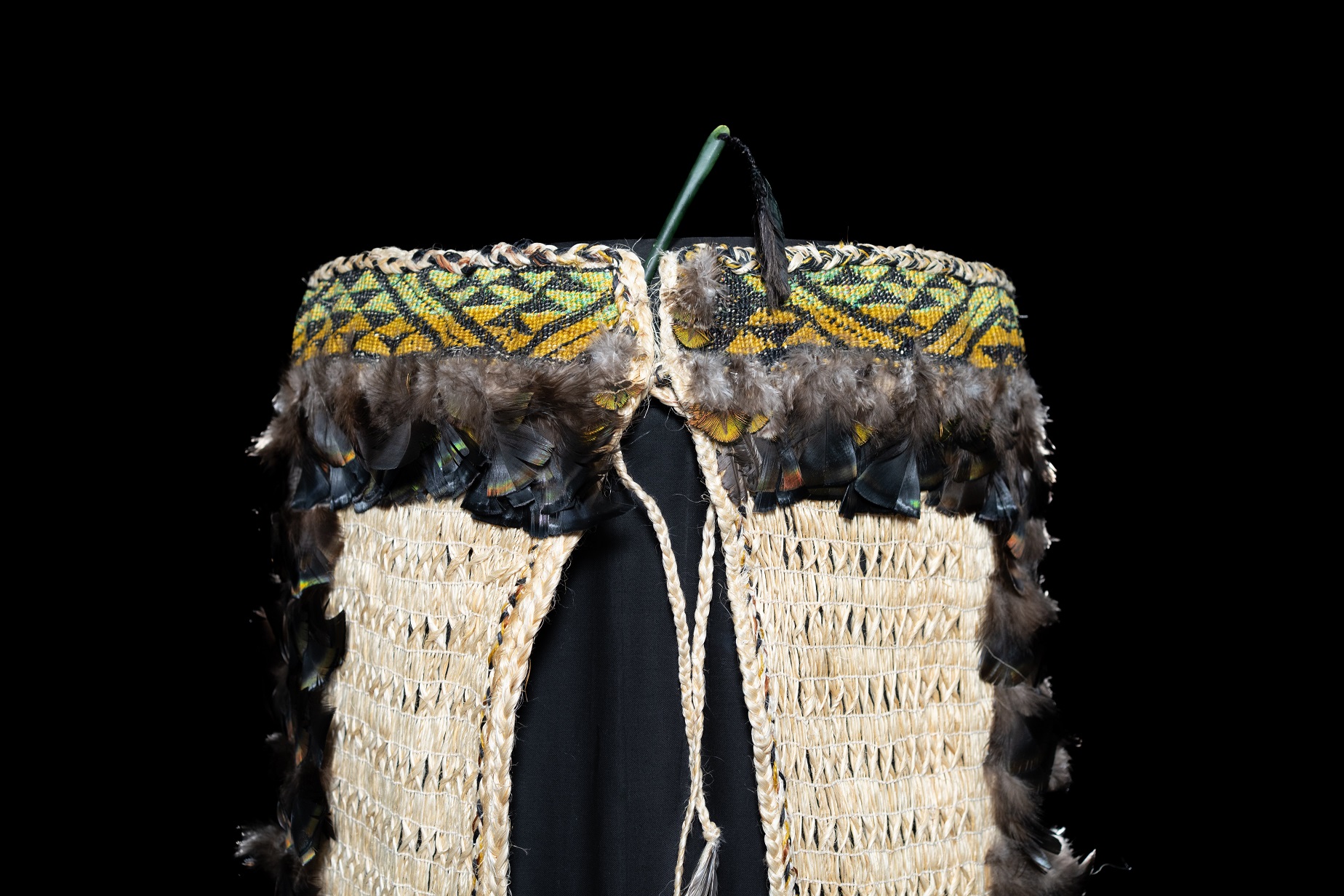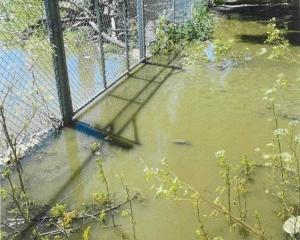
Weaving has not only united Rokahurihia (Roka) Ngarimu-Cameron’s ancestors but also her descendants.
It has woven together her Māori and Pākehā sides in a journey that has resulted in her sharing her skills with four generations of her own family and the community.
"Weaving has become the saving grace of our family," Ngarimu-Cameron (Te Whānau-ā-Apanui, Te Arawa, Whakatōhea, Ngāti Awa and Ngāti Tūwharetoa, Irish) says.
The contribution she has made is being celebrated in an exhibition "Te Whare Pora — House of Learning" at Te Atamira in Queenstown. Curator Dr Awhina Tamarapa (Ngāti Kahungunu, Ngāti Ruanui), formerly curator Māori at Te Papa, says the exhibition aims to honour Ngarimu-Cameron as a senior Māori weaver and her legacy.
"It is supporting Roka’s vision and promoting Māori weaving as an art form and a practice."
She first met Ngarimu-Cameron, who grew up with her kuia, Roka, and mother, Te Oti, at Hāwai, near Ōpōtiki, in the 1990s. Tamarapa’s family in Dunedin were active in the Māori Anglican diocese with Ngarimu-Cameron and her husband Kerry. She later reconnected with Ngarimu-Cameron as part of the Te Roopu Raranga Whatu o Aotearoa (National Māori Weavers Collective) more than 15 years ago.
"I was in awe of her expertise and knowledge — her and other senior Māori weavers. They are quite inspirational and aspirational in their work."
It is thanks to the work of Ngarimu-Cameron, who learnt to weave from her kuia and others like her, that Māori weaving has survived to thrive today. It is seen as a living art form, a revered, sacred practice that embodies cultural values, knowledge and customs, Tamarapa says.
"It was in decline in the 19th and early 20th century but from the 1950s it has been revived. Weaving is everywhere now, taught at tertiary level, in schools, on marae and at home. It is a flourishing example of an art form which is unique to Aotearoa.
"In today’s times it’s more about recognising the relationship Māori weaving has to the natural environment — there are universal themes to do with weaving, such as nurturing and growth and inclusivity. All of those themes are touched on in this exhibition."
Weaving’s core concepts also include whakapapa (genealogical connections), mauri (life principle, energy) and tapu (sanctity).
Ngarimu-Cameron, who now lives in Queenstown, where she continues to teach weaving, wanted the main focus of the exhibition to be on recognising Papatūānuku (the Earth Mother) and people’s responsibilities to look after her and the flora and fauna of New Zealand through weaving.

Tamarapa, now a post-doctoral researcher at Victoria University of Wellington, has been an advocate for Māori weaving for a long time after being taught by her grandmother — "who adored Roka in Dunedin" — and others.
Over the years, Ngarimu-Cameron has established three weaving schools and a lectureship at Otago University before being encouraged to pursue a fine arts master’s at the Dunedin School of Art in 2006.
Ngarimu-Cameron remembers seeing a forlorn-looking Western loom in a corridor, which inspired her creativity. Instead of using the ancient whatu (finger weft twining) technique using hand-processed whītau (inner harakeke or New Zealand flax fibre) she used the loom. It cut the time it takes to make a cloak from several years to several months. She also used other fibres from native plants, such as lace bark, to weave into the garments. Her work from those two years was exhibited at the Dunedin Public Art Gallery in 2008.
"She is a trailblazer in that regard," Tamarapa says.
In 2008, Ngarimu-Cameron travelled to Australia where she saw indigenous art on animal skins, so when she was offered the use of penguin and seal skins from animals, which died naturally and were used in research by the University of Otago, she researched ways to incorporate them into her practice, making traditional cloaks and shawls which were exhibited at Tūhura Otago Museum in 2015.
Ngarimu-Cameron sees her work as a metaphor for interculturalism and a response to her dual heritage. One cloak features the words of the Treaty of Waitangi and the 10 commandments, again bringing together Western and Māori ideas.
"The influence of my European side is in the adornments woven into my garments like my tartan," Ngarimu-Cameron says.
She also researched many other cultures’ indigenous art practices when travelling, which provided inspiration for her work. Her work has also been exhibited in Australia, Canada, Fiji, Samoa and America.
"The same as Māori, they used whatever was provided to them where they lived for garments, housing ..."
Along with the idea of caring for whenua (the land), the idea of caring for people has also been important to Ngarimu-Cameron. She was made a Member of the New Zealand Order of Merit for her work for Māori in 2011.
"She definitely has those qualities, her and her family, in her life. This exhibition is a really great way of demonstrating her legacy," Tamarapa says.
"She’s also taught for so many years, generations of people, and part of her practice, her family practice, is helping people and providing pastoral care."

"I’m a trained social worker, my husband is a teacher, we are caregivers who look after people in need," Ngarimu-Cameron says.
Making simple woven items like stars, fish or baskets helped young and old to heal, giving them something to be proud of and a sense of themselves.
Also in the exhibition are taonga puoro hand-crafted and cared for by Ngarimu-Cameron’s family from native wood found discarded or washed down rivers. Taonga puoro were and are used to perform ceremonies, mark events and make announcements and were used for healing and communication between people and the spiritual realm. Like weaving, the practice went into decline during the 19th century until about 30 years ago when it was revived by the late Hirini Melbourne, Richard Nunns and Brian Flintoff who established the revival group Haumanu, including Rangiiria Hedley, Aroha Yates-Smith and Hinewirangi Kohu-Morgan.
"Weaving is therapeutic and so is the practice of taonga puoro, in the sounds and vibrations and as the instruments are derived from the natural environment. To us, as Māori, those realms are the same. In fact, the guardians of both those two areas are sisters, so we are showing that genealogical connection as well," Tamarapa says.
"It’s about tying up threads. A lot of weaving metaphors are about connection and bringing people together, learning and teaching. Those aspects are imbued in Māori weaving."
Ngarimu-Cameron says it is all part of preserving and promoting taonga.
"We’re not forgetting our ancestors’ ways."
Also in the exhibition are works completed by her students.
Tamarapa says it is a very layered exhibition with aspects that will appeal to many different people.
"We want people to come in and feel something. It is important for people to learn and be in an environment that is immersive"
To see:
Te Whare Pora — House of Learning, at Te Atamira, Queenstown until July 28. Talk: Director of the Dowse Art Museum, Karl Chitham, June 15, 3pm, Puāwai.












